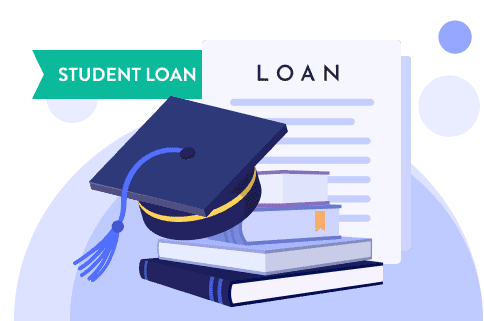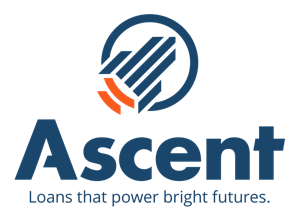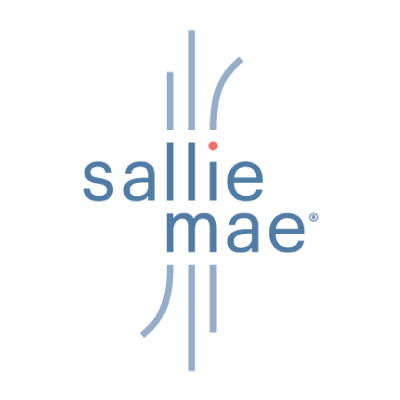Best Student Loans in Montana of 2024

Updated: December 28, 2023
Advertising & Editorial Disclosure
The rising costs of higher education in Montana are leaving many aspiring scholars searching for a path forward. Thankfully, student loans can help provide a roadmap to financial support that aligns with your educational ambitions.
Based on MoneyGeek’s analysis, Ascent offers the best student loans in Montana. Sallie Mae is ideal for the lowest interest rates, while Earnest is preferable for students with bad credit. Prodigy Finance provides the best deals for international students, while College Ave is excellent for those who need a co-signer.
Understanding Student Loans
Student loans are the financial vehicles that provide the monetary support needed to access colleges and universities, acting as a vital resource for those who aspire to expand their knowledge and skills.
When you take out a student loan, you are borrowing money that must be repaid with interest. The borrowing process begins with an application, followed by approval and disbursement of funds. Interest accumulates over time, and repayment typically starts after you graduate, with various options for payment plans and deferment.
Student loans are categorized into two types:
Federal student loans: Managed by the federal government, federal student loans often come with benefits like lower interest rates, income-driven repayment plans and potential forgiveness programs.
Private student loans: Provided by banks, credit unions and other lending institutions, private student loans typically have varied terms, often with higher interest rates and less repayment flexibility.
Thoroughly understanding the differences between federal and private student loans is a fundamental step in making a decision that supports your academic pursuits and financial well-being.
Best Private Student Loans in Montana
Private student loans, offered by banks and other financial institutions, serve as an alternative to federal loans when the latter don't cover all educational expenses. For instance, if you're pursuing a specialized course with higher tuition fees and federal aid falls short, private student loans may be the solution.
These loans have certain benefits, such as the potential for larger loan amounts and the ability to choose a lender. However, they also come with challenges like higher interest rates and less lenient repayment options. As such, it’s important to understand the terms of a private student loan before borrowing, as it can have lasting impacts on your financial health.
- Ascent
- 4.36%–14.08%Fixed APR Range
- 1.47%–11.31%Variable APR Range
- $2,001–$200,000Loan Amount Range
- Non-U.S. citizens and temporary residentsCo-signer
Ascent is a private student loan lender providing loans for college and graduate students. They offer both co-signed and non-co-signed loan options.
Pros
- Offers both co-signed and non-co-signed loan options.
- Provides an option for a 1% cash back graduation reward.
- Offers loan prequalification, so you can check rates without affecting your credit.
Cons
- For non-co-signed loans, borrower must meet certain eligibility requirements like GPA.
- Loans not available to international students.
- Higher interest rates for non-co-signed loans.

Ascent
Best Overall
- Sallie Mae
- 3.50%–13.83% Fixed APR Range
- 1.37%–11.76%Variable APR Range
- $1,000 minimum, no maximumLoan Amount Range
- Allowed but not requiredCo-signer
Sallie Mae is one of the most recognized private student loan lenders. It offers loans for undergraduates, graduates and parents of students.
Pros
- Offers a wide range of loan products.
- Provides co-signer release after a certain number of on-time payments.
- No origination fees or prepayment penalties.
Cons
- Interest rates can be high for those with poor or no credit.
- Doesn't offer prequalification, so you won't know your rate until you apply.
- Late payment and returned payment fees.

Sallie Mae
Best With Lowest Interest Rates
- Earnest
- 4.43% - 14.90%Fixed APR Range
- 5.32% - 16.20%Variable APR Range
- $1,000 upLoan Amount Range
- Allowed Co-signer
Earnest is a technology-enabled fintech lender that offers low-interest private student loans and student loan refinancing.
Pros
- Offers flexible repayment terms and forbearance options.
- No origination or prepayment fees.
- Provides loan prequalification, so you can check rates without affecting your credit.
Cons
- Requires a good credit history, which might be a hurdle for some borrowers.
- Not available in all U.S. states.
- No co-signer release option.

Earnest
Best for Those With Bad Credit
- SoFi
- 3.22%–11.16%Fixed APR Range
- 1.10%–11.68%Variable APR Range
- $5,000 minimum, no maximumLoan Amount Range
- OptionalCo-signer
SoFi is an online personal finance company offering a range of lending and wealth management services, including student loan refinancing and private student loans.
Pros
- Offers prequalification, so you can check your rates before formally applying.
- No origination fees or prepayment penalties.
- Offers unemployment protection where you can pause your payments if you lose your job.
Cons
- Requires good credit, which can be a hurdle for some borrowers.
- Does not offer co-signed loans for undergraduates.
- No co-signer release for student loan refinancing.

SoFi
Best for Parents
- Prodigy Finance
- Starts at 4.98%Fixed APR Range
- Starts at 4.66%Variable APR Range
- Minimum $15,000, no maximumLoan Amount Range
- Not requiredCo-signer
Prodigy Finance offers international student loans to students from 150 different nationalities. It specializes in loans for graduate students attending business, science, technology, engineering and mathematics programs.
Pros
- Available to international students.
- No collateral or co-signer required.
- Offers a grace period after graduation before payments begin.
Cons
- Not available for undergraduate students.
- Limited to specific schools and programs.
- High minimum loan amounts.

Prodigy Finance
Best for International Students
- College Ave
- 4.43% - 17.99%Fixed APR Range
- 5.59% - 17.99%Variable APR Range
- $1,000 minimum, no maximumLoan Amount Range
- Not requiredCo-signer
College Ave is a private student loan company that offers loans for undergraduates, graduates and parents of college students. It provides flexibility in repayment terms and loan options.
Pros
- Variety of loan products, including undergraduate, graduate and parent loans.
- Multiple repayment options, including interest-only payments while in school.
- No origination fees or prepayment penalties
Cons
- Requires a credit check, potentially making it hard for students with no or low credit history.
- Doesn't offer loan prequalification, so you won't know your rate until you apply.
- Co-signer release only after half the loan term has passed.

College Ave
Best for Those That Need a Co-signer
Federal Student Loans in Montana
Federal student loans are a type of financial aid provided by the U.S. government to support students in pursuing higher education. They offer several benefits that can make them a preferred choice for many students, such as:
How to Apply for Federal Student Loans in Montana
Applying for federal student loans involves well-defined steps, each contributing to a transparent and fair assessment of your financial needs. Below, we broke down the entire process, providing you with a clear roadmap to obtaining a federal student loan.
Collect necessary information
Start by collecting all the required information, such as your Social Security number, tax information and financial records. Preparing these documents in advance will help streamline the application process for federal student loans in Montana.
Complete the Free Application for Federal Student Aid
The Free Application for Federal Student Aid (FAFSA) is the gateway to federal financial aid in Montana. When completing the form online, submitting it by Montana's deadline is crucial to ensure you receive the maximum amount of aid. The data you provide will be used to assess your financial need and eligibility for various aid programs.
Review your Student Aid Report
After submitting the FAFSA, you'll receive a Student Aid Report (SAR) summarizing your financial information. This plays a vital role in determining your financial aid eligibility in Montana, so make sure to review it carefully and correct any errors you catch.
Explore Montana state aid options
Montana offers various state-specific financial aid programs that you may be eligible for. Visit Reach Higher Montana to find resources and information on other available aid programs.
Accept your financial aid offer
Your chosen school in Montana will send you a financial aid offer detailing the federal aid you qualify for. It's essential to review this offer carefully, accept the aid you need and follow the school's instructions for finalizing the process.
Complete loan entrance counseling and sign the Master Promissory Note
Before you receive your federal student loan in Montana, you'll need to complete loan entrance counseling to understand your obligations as a borrower. Additionally, you must sign a Master Promissory Note (MPN), which outlines the loan's terms and conditions. Read this legal document thoroughly before signing.
The Types of Federal Student Loans Available in Montana
There are four primary types of federal student loans, each with unique characteristics and benefits. Understanding these options can empower students to make wise financial decisions.
Direct Subsidized Loans: Aimed at undergraduate students with demonstrated financial need, Direct Subsidized Loans have the interest covered by the government during certain periods. This helps alleviate the financial strain on students while they pursue their education.
Direct Unsubsidized Loans: Direct Unsubsidized Loans are open to both undergraduates and graduates without the requirement to prove financial need. The borrower is responsible for all interest charges, including while in school. As such, this option requires consideration of the ongoing interest responsibility.
Direct PLUS Loans: Serving graduate students or parents of dependent undergraduates, Direct PLUS Loans can finance the entire cost of education minus other aid. That said, they typically involve a credit assessment and come with higher interest rates and fees.
Direct Consolidation Loans: Direct Consolidation Loans allow borrowers to combine various federal loans into a single loan, streamlining the repayment process. This can lead to new repayment plan options and a more manageable repayment experience. However, students should carefully weigh the potential extension of the repayment term and increase in total interest before applying.
Student Loan Forgiveness in Montana
Student loan forgiveness is a financial provision that allows eligible students to have a portion or all of their student loan debt either reduced or completely canceled. Student loan forgiveness is often used to encourage careers in specific fields that are vital to the community, such as education, health care or public service.
In Montana, there are specialized student loan forgiveness programs that cater to professionals in essential sectors. These programs are designed to alleviate the financial burden of education loans and inspire talented individuals to serve in critical areas within the state.
Quality Educator Loan Assistance Program
The Quality Educator Loan Assistance Program is designed to attract and retain quality educators in Montana's rural and high-need schools. It offers up to $3,000 per year for up to four years to help repay educational loans.
Applicants must be quality educators hired within the last three years and teach in a designated critical quality educator shortage area. Applications are available through the Montana Guaranteed Student Loan Program, and applicants must provide supporting documents to verify eligibility.
Montana Institutional Nursing Incentive Program
Aimed at addressing the nursing shortage in Montana, the Montana Institutional Nursing Incentive Program offers loan repayment assistance to nurses who agree to serve in Montana's medically underserved communities. The amount varies based on the need and availability of funds.
To qualify, you must be licensed to practice as a registered professional nurse and employed as a full-time registered professional nurse by either the Montana State Prison or the Montana State Hospital. Interested individuals can apply through the Montana Area Health Education Center, providing the necessary documentation.
Public Service Loan Forgiveness (PSLF) Program
Public service workers in Montana may benefit from the Public Service Loan Forgiveness (PSLF) Program, which forgives the remaining balance on Direct Loans after 120 qualifying payments on an approved repayment plan.
Applicants must be employed full-time by a government or non-profit organization and have qualifying federal loans. Those interested can apply for forgiveness through the U.S. Department of Education after meeting the requirements.
Tips for Managing Student Loans
For many students, student loans are a pathway to higher education and brighter opportunities. However, these loans come with the responsibility of proper management and eventual repayment. Here are some tips on how to manage student loans effectively:
Scholarships and Grants as Alternatives
Scholarships and grants are financial awards that support students in their educational endeavors. While scholarships are often awarded for specific achievements or talents, grants are usually allocated based on financial need.
Unlike loans, which are funds lent to students and must be repaid, along with interest, scholarships and grants are essentially gifts that don't require repayment. This feature makes them a valuable resource for students seeking to minimize future financial obligations. By providing financial support without the strings of repayment, they offer a pathway to education that is both accessible and financially responsible.
In Montana, pursuing higher education can be made more accessible through scholarships and grants. Consider following these steps to apply for these financial opportunities:
Start researching early
Begin your search for scholarships and grants well in advance of deadlines. Early research allows you to identify opportunities that match your profile and gives you ample time to prepare your applications.
Complete the FAFSA
Fill out the FAFSA to determine your eligibility for need-based grants. Completing the FAFSA accurately is vital for accessing various financial aid opportunities, including federal and state grants.
Collect necessary documents
Gather all required documents, such as transcripts and letters of recommendation. Having these ready streamlines the application process and ensures you meet all the requirements.
Write personalized essays
If an essay is required, tailor it to the specific scholarship or grant. Writing a thoughtful and personalized essay can highlight your unique qualifications and resonate with the selection committee.
Follow application instructions carefully
Adhere to the specific guidelines provided for each scholarship or grant application. Careful attention to instructions ensures that your application is complete and submitted correctly, improving your chances of being selected.
Apply to multiple opportunities
Don't limit yourself to applying for just one scholarship or grant. By applying to several opportunities that you qualify for, you increase your chances of receiving financial support.
The Impact of Student Loans on Credit
The impact of student loans on a borrower's financial life extends far beyond the classroom, influencing everything from credit score to future borrowing opportunities. Student loans, like other forms of credit, are closely tied to credit scores. Making payments on time and managing the loan responsibly can contribute to a positive credit history, which is essential for future financial endeavors.
Late or missed payments can lead to a decline in credit rating, affecting various aspects of life, from obtaining a credit card to renting an apartment. In the worst case scenario, default can lead to a significant drop in credit score, making it extremely difficult to obtain credit in the future.
Additionally, default can lead to wage garnishment, where a portion of the borrower's salary is withheld to pay the debt. This can create a financial strain that lasts for years and affects many areas of life.
Frequently Asked Questions (FAQs)
We answered some frequently asked questions about student loans in Montana to guide you through the complexities of this landscape and help you make financially savvy decisions for your education.
For federal student loans in Montana, eligibility criteria include being a U.S. citizen or an eligible non-citizen, having a valid Social Security number and enrolling at least half-time in an eligible degree or certificate program. Maintaining satisfactory academic progress and completing the FAFSA are also required. Eligibility for private student loans in Montana varies by lender but often includes a good credit score or a creditworthy co-signer.
To apply for a federal student loan in Montana, you'll need to complete the FAFSA online, which will determine your eligibility for federal financial aid, including loans. For private student loans, the application process will vary by lender. You'll typically apply directly through the lender's website or at a financial institution, providing information about your financial situation, the school you plan to attend and the amount you want to borrow.
With subsidized federal loans, the government pays the interest while you’re in an in-school, grace or deferment period. With unsubsidized federal loans, you’re responsible for all interest charges, including while you’re in school.
Interest on student loans is calculated as a percentage of the unpaid principal amount or the amount you initially borrowed. This may be capitalized depending on the loan type, meaning it's added to the principal, and you then pay interest on the new, higher principal amount.
For federal student loans, several repayment plans are available, including Standard, Graduated, Extended and Income-Driven Repayment Plans, providing flexibility based on your financial situation. Private student loans have repayment options that vary by lender, which may include different terms for repayment and fixed or variable interest rates.
If you can't repay your student loan, contact your loan servicer as soon as possible to discuss your options, such as changing your repayment plan, deferment or forbearance. Defaulting on the loan can have severe consequences, including damage to your credit score, wage garnishment and legal action.
Student loan forgiveness means that you're no longer required to repay some or all of your loan. Federal student loans offer forgiveness programs for those working in public service, teaching or other qualifying professions. Requirements vary by program but often include making a certain number of qualifying payments and working in a qualifying position for a specific period.
About Christopher Boston

sources
- Federal Student Aid. "Free Application for Federal Student Aid." Accessed August 23, 2023.
- Montana University System. "Montana Institutional Nursing Incentive Program (MINIP)." Accessed August 23, 2023.
- Office of Public Instruction. "Quality Educator Loan Assistance FAQs." Accessed August 23, 2023.
- Reach Higher Montana. "Reach Higher Montana." Accessed August 31, 2023.
Editorial Disclosure: Opinions, reviews, analyses and recommendations are the author’s alone and have not been reviewed, endorsed or approved by any bank, credit card issuer, hotel, airline, or other entity. Learn more about our editorial policies and expert editorial team.
Advertiser Disclosure: MoneyGeek has partnered with CardRatings for our coverage of credit card products. MoneyGeek and CardRatings may receive a commission from card issuers. To ensure thorough comparisons and reviews, MoneyGeek features products from both paid partners and unaffiliated card issuers that are not paid partners.